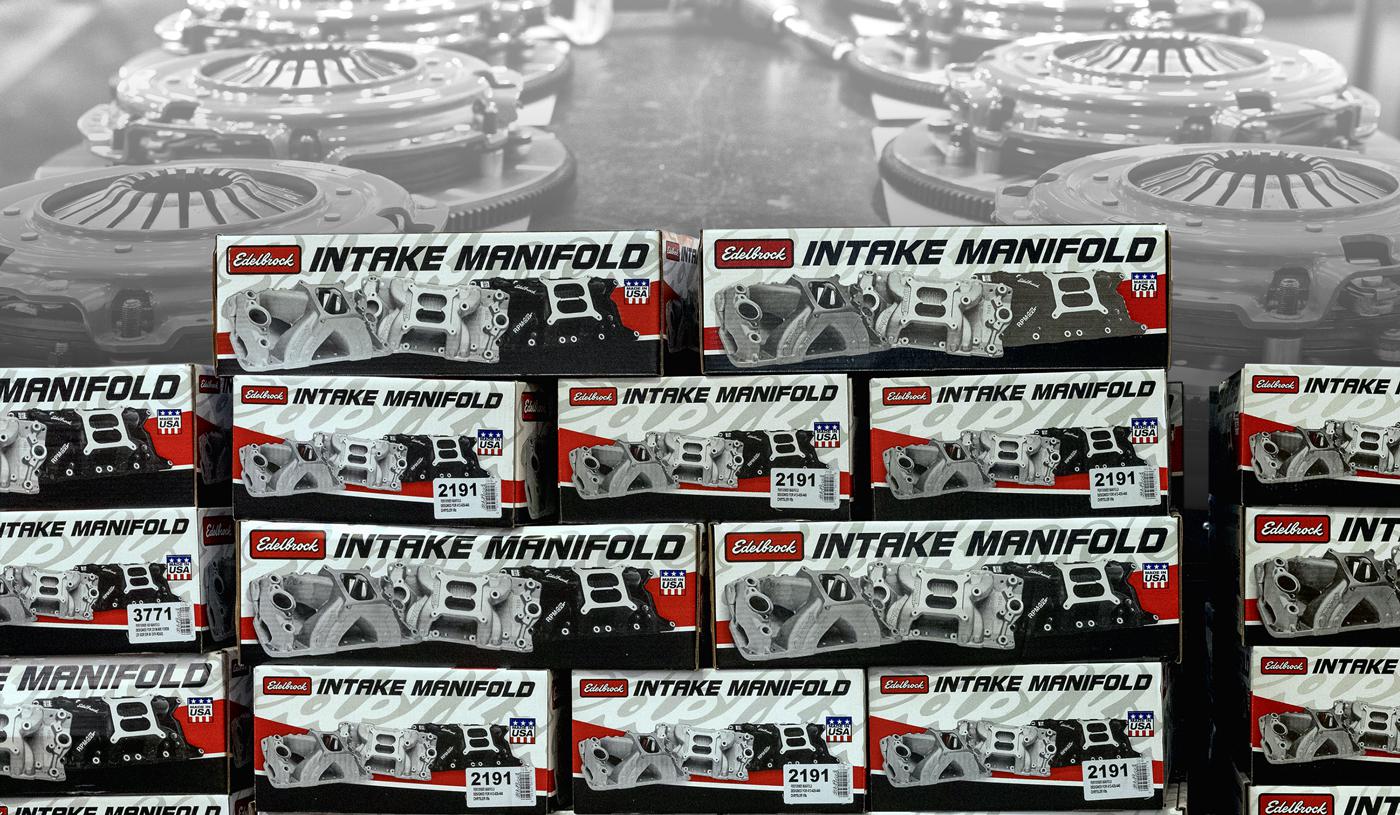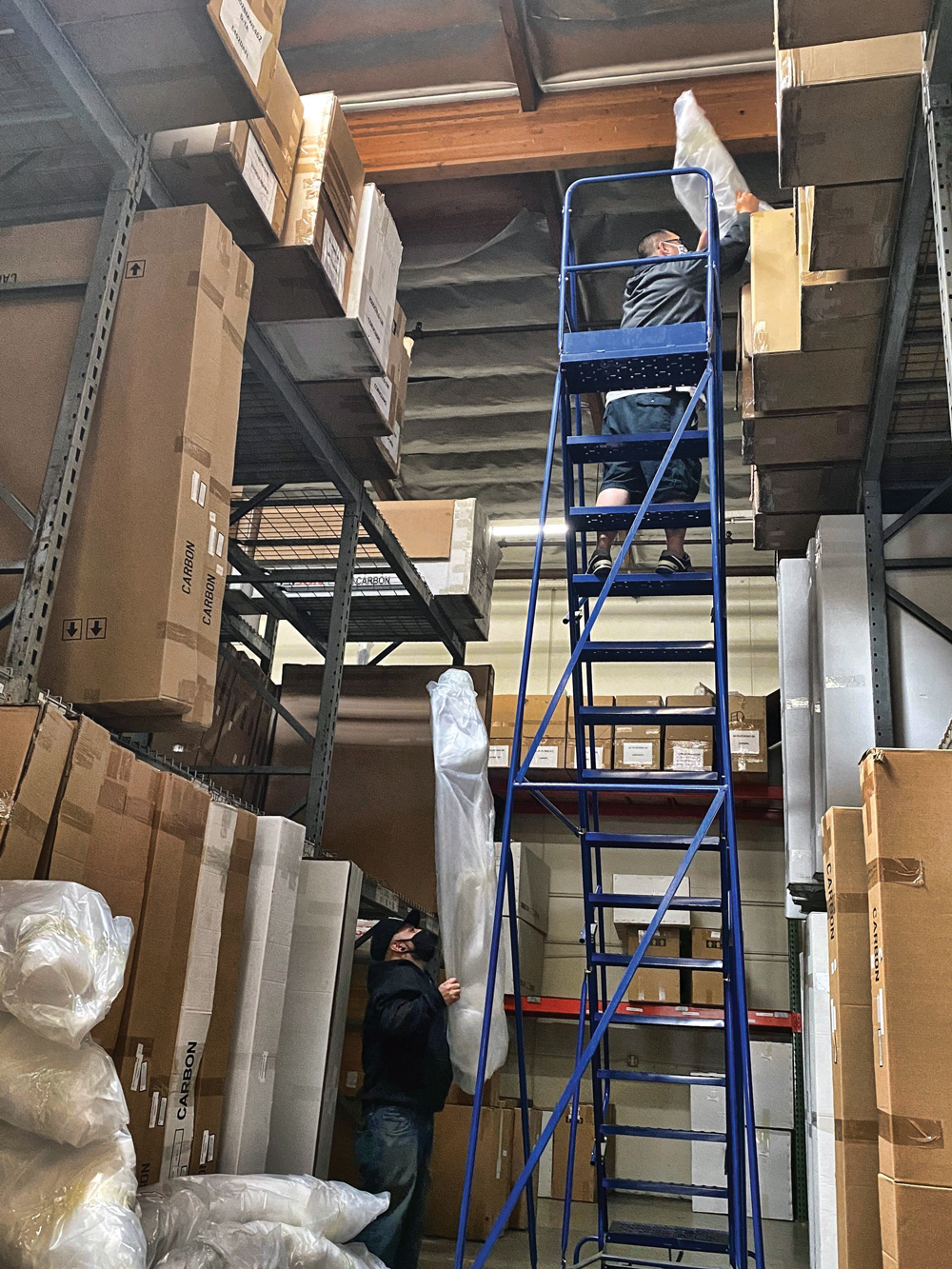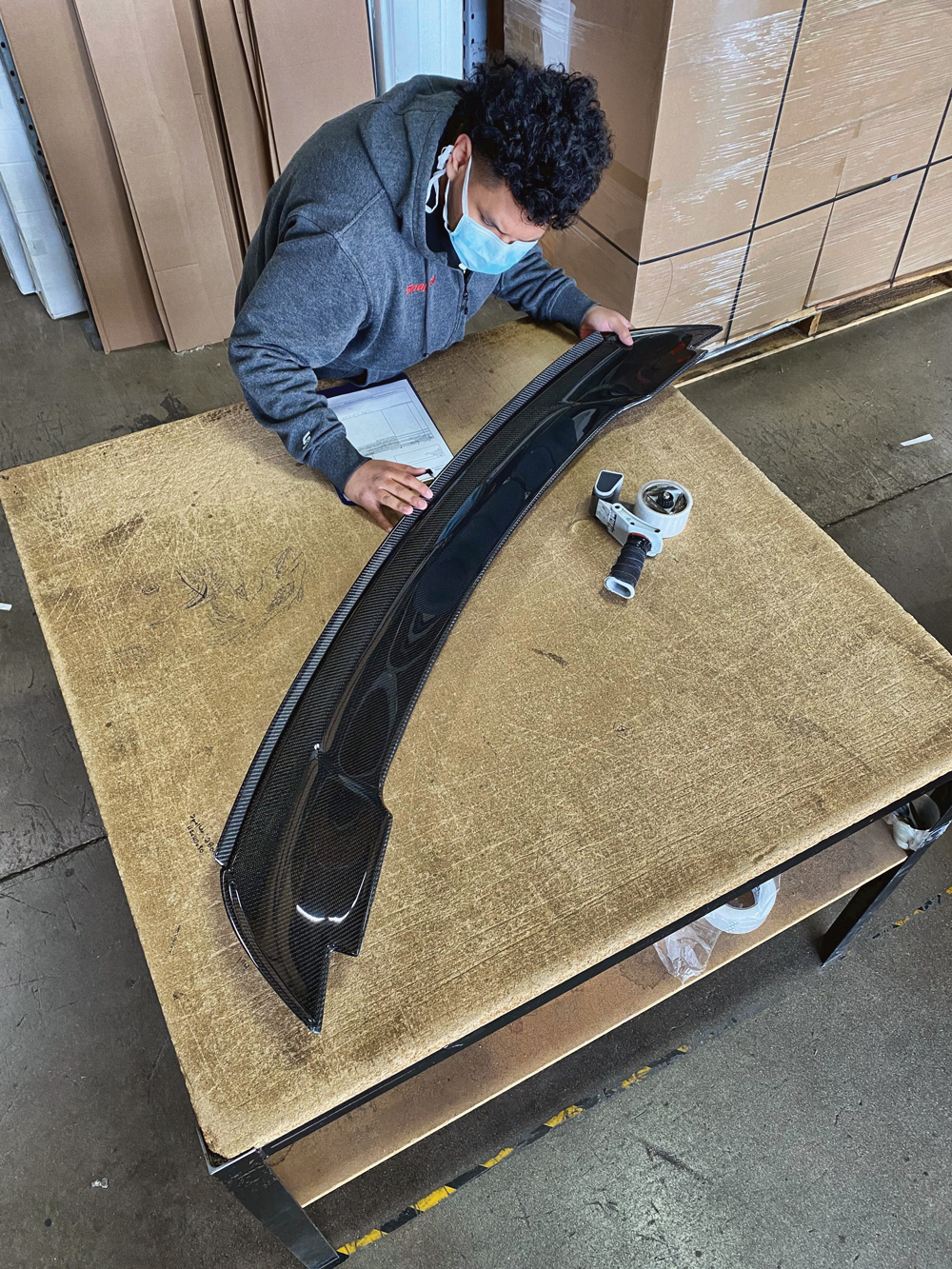Still Spiking

Motorsports parts sales have surged since the pandemic shutdowns. How long can it go on?
By now, it’s a familiar story for just about every company that services the motorsports industry—the expectations of a severe economic slowdown following last spring’s pandemic lockdowns quickly gave way to the reality of massive demand for parts, resulting in eye-popping sales spikes.
And that demand is still in high gear, with companies from coast-to-coast scrambling to keep up.
“Talking to the customers, the warehouses, the retailers that are out there, everything that Dart can supply them, it doesn’t matter if it’s a block, a set of heads, an intake manifold, or even small parts for our components, it doesn’t even land on their shelf,” said Steve Arent of Dart Machinery, Warren, Michigan. “It comes in their receiving door, and out their shipping door within a day or two. I don’t know if that’s a good thing because the orders that we have, it’s the biggest in the company history, as far as the open orders. And they’re not stopping. We’re constantly playing catch-up to fulfill these orders and the due dates that we’re given.”
In retrospect, the reasons behind the surge aren’t difficult to figure out. During the initial lockdowns people were stuck at home, often isolated, and looking for things they could do. “One thing we have to realize is we’re in the entertainment industry. I don’t think people quite get that,” said Alan Davis of Eagle Specialty Products, Southaven, Mississippi. “People spend disposable income on what we all have to offer. And when they all of a sudden couldn’t go out to eat as much, and they couldn’t go to ballgames, and they couldn’t go to movies and they couldn’t travel, they all looked at that project car and said, ‘Hey, I’m going to work on that. I’ve got time, I’ve got disposable income, money.’ I think that’s what drove a lot of the spike this summer. A lot of people say, ‘Eh, it’s just the extra stimulus money.’ But you know, it’s not that much in the scheme of building a car.”
“We saw a lot of, obviously, web traffic that definitely spiked up by June,” said Dave Davis of Anderson Composites, a manufacturer of carbon fiber and fiberglass body parts for late-model performance cars, headquartered in City of Industry, California. “What I tended to notice was that, even if somebody was working or not working, they seemed to have more idle time. They basically were on their phone looking at our products on our website. My goal was to let everybody know that, one, we were still in business, and two, somebody was going to answer the phone.”
William Goldman, a veteran Hollywood screenwriter, once said of the movie business, “Nobody knows anything.” That could be said of the past year, too, as enterprises of all types struggled to navigate the pandemic. “The crazy thing is, everybody, from what we thought, to what experts thought, to what the industry leaders were telling us, to what our governments were telling us, state, local, and federal—everybody got it wrong,” said Eagle’s Alan Davis. “Everybody didn’t just miss the bullseye, they missed the whole target. Everybody thought everything was going to die, we’re going to be in for a recession, blah blah blah. The result of the lockdowns and the pandemic, how we dealt with it, how we’re getting out of it—it’s all just been wrong. We wake up every day and wonder, ‘How in the world did that happen?’ Nobody saw any of this coming.”
From Every Direction
As the pandemic spawned shutdowns and economic chokepoints around the country, followed by blistering demand for products, each company had to deal with different problem areas. For some, the big issue was raw material shortages; for others it was shipping delays, or labor shortages, or teams spread far and wide working remotely, or social distancing and sanitation standards. For some companies, it was all of the above.

“We never actually laid anybody off back in the spring. My boss is the type where he’s really loyal to his employees,” said Alan Davis. But some employees quit, and the company struggled to secure replacements. “It was a relentless turnover. It really put us behind. That coupled with the annual Christmas rush, we always have trouble getting parts—forgings, semi-machined parts—from overseas during the Christmas rush, because Walmart and everybody else gets bombarded with their stock. So things slow down a little bit. And then come February the Chinese New Year hits and the entire country of China shuts down for a month. And all those things—increased orders, sales being what they are, having trouble getting employees to stay, and then increased shipping problems—really put us in the hole by January or February.”
The frustrations of hiring and retaining employees led Eagle Specialty Products to some unconventional measures, with surprising results. For online job applications, they included a new question—an almost tongue-in-cheek one, but not entirely. “Are you really interested in getting a job, or are you just wanting an interview to satisfy your unemployment benefits requirements?”
“But the response was not something we expected at all,” Alan Davis noted. “The number of people that actually admitted they only wanted an interview so they could keep their unemployment benefits was 80%. People actually said that.”
Business restrictions also varied wildly from state to state. Many California-based businesses, such as Anderson Composites, are just now approaching normalcy. “Our team finally came back to the office as a group just this week (mid-April). It all comes down to the availability of a vaccine,” said Dave Davis. “We’re still pseudo-remote, and we’re still working as best we can as far as getting our supplies online, and our parts basically in-house. But they’re already pre-sold for all the popular items.
“The rough winter season back East didn’t help us out much either. We had notifications and a lot of calls from dealers as far as time delays,” Davis continued. “Again, it was logistics for everybody as far as getting things from our warehouse to our dealers and drop-shipped to our consumers. We’re catching up with that, and now we’re catching up since the port of LA is back open supposedly at full steam again. You could see all the ships lined up outside last month. They’re finally all getting back in line again.”
For Dart Machinery, labor difficulties combined with multiple state shutdowns, plus attaining the necessary small parts from the company’s suppliers, were the biggest hurdles. “Here in Detroit, with the Big 3, you would think that our employee pool would be bigger than most, but everybody, all manufacturing here in Detroit since January 1 of this year, has turned back on, and they’re gobbling up employees left and right,” Dart’s Arent said. “Any time that we’re shut down for a day, it’s four days for us to make up. This time we were shut down for a week and a half, and it just puts us further and further behind.”
Adapting on the Fly
Companies have been forced to improvise to meet the surge in demand. “About three or four years ago we introduced a line of connecting rods and crankshafts that was sort of in between our entry level and our high end. As far as strength and everything it was in between, the price was in between, and we really thought there would be a market for that,” said Eagle’s Alan Davis. “And they’ve never really sold well. I think a lot of that is just because people are used to ordering what they’re used to ordering. So when everything started getting scarce on the shelves, we started swapping those parts.”
The past year has proven to be an excellent opportunity to educate customers on this newer line of parts. “People are going for it simply because they want whatever they can get right now. But it’s been a way to put some of this new product in people’s hands,” Davis continued. “Now, we’re starting to see warehouses putting this stuff on the shelf, because the customers got it, because they had to get something, and they’re saying, ‘Hey, this is not too bad, and I can call and order that again.’ So it’s been a weird way to introduce new products, but it’s worked.”
For Dart Machinery, partial assembly ahead of time was better than waiting until every part was in hand. “In March we had 120 big blocks that we made up to a certain point. We were waiting for main caps to come in. As soon as the main caps came in we hammered the rest of them out, machined the caps, the cam tunnel, honed them all up and shipped them out the door. So we’re still making parts, but unfortunately we’re waiting for weirdo components—main caps, main bolts, cam bearings—to complete the machining process.”

All of these factors make planning for the next six to 12 months difficult, to say the least. “It’s tough,” said Eagle’s Alan Davis. “There’s a side of you that says, ‘This is a bubble. This is going to slow down.’ And so you’re real hesitant to just throw everything in to ramping up production and going crazy. There’s a side of you that says, ‘We don’t want to get in over our head because when this slows down the brakes are going to hit pretty hard.’ But then again, we kind of thought that in December, and it hasn’t slowed down. So you are just riding this wave wondering how long it really is going to last. Because it does not show any signs of slowing down at all.
“We have far less inventory on the shelf than we ever have,” he continued. “So we’d like to get that back up to a normal level anyway. So even if it hits the brakes we’ll probably stay in production for several months just to get our inventory back to where we’d like it to be.”
“We keep thinking that it’s going to slow down,” said Dart’s Arent. “We figured after last summer it would slow down a little bit, but it hasn’t. The first quarter of this year, not only Dart, but all of Race Winning Brands’ other companies are banner years so far. Our crystal ball is a little foggy when it comes to the future.”
Add reliable crystal balls to the ever-growing list of parts in short supply.
SOURCES
–
Anderson Composites
andersoncomposites.com
Dart Machinery
dartheads.com
Eagle Specialty Products
eaglerod.com
 MEMBERSHIP LOGIN
MEMBERSHIP LOGIN JOIN PRI
JOIN PRI


